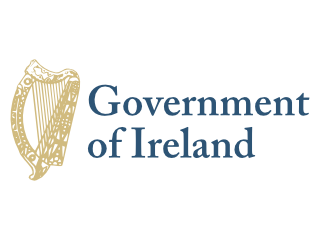Celtic tribes arrived on the island between 600 and 150 B.C. Invasions by Norsemen that began in the late 8th century were finally ended when King Brian BORU defeated the Danes in 1014. Norman invasions began in the 12th century and set off more than seven centuries of Anglo-Irish struggle marked by fierce rebellions and harsh repressions. The Irish famine of the mid-19th century saw the population of the island drop by one third through starvation and emigration. For more than a century after that the population of the island continued to fall only to begin growing again in the 1960s. Over the last 50 years, Ireland's high birthrate has made it demographically one of the youngest populations in the EU. The modern Irish state traces its origins to the failed 1916 Easter Monday Uprising that touched off several years of guerrilla warfare resulting in independence from the UK in 1921 for 26 southern counties; six northern (Ulster) counties remained part of the UK. Unresolved issues in Northern Ireland erupted into years of violence known as the "Troubles" that began in the 1960s. The Government of Ireland was part of a process along with the UK and US Governments that helped broker what is known as The Good Friday Agreement in Northern Ireland in 1998. This initiated a new phase of cooperation between the Irish and British Governments. Ireland was neutral in World War II and continues its policy of military neutrality. Ireland joined the European Community in 1973 and the euro-zone currency union in 1999. The economic boom years of the Celtic Tiger (1995-2007) saw rapid economic growth, which came to an abrupt end in 2008 with the meltdown of the Irish banking system. Today the economy is recovering, fueled by large and growing foreign direct investment, especially from US multi-nationals.
Ireland is a parliamentary republic.
Source: CIA World Factbook
Members:
Resources
Displaying 11 - 15 of 137Statute of the Urban Land Organization.
The Act is the Statute of the Urban Land Organization as a subordinate department of the Ministry of Housing and Urban Development. The main duty of the Organization is to implement the rules and regulations regarding the lands which are inside of city limits. The Organization consists of a General Assembly, a Board of Directors, an Executive Manager and an Inspector. The Statute consists of 22 articles divided into 3 chapters: General Provisions (I); Structure (II); Miscellaneous provisions (III).
Executive Regulation on Law of the Urban Land.
This Regulationt enforces the Law of Urban Land of 13 September 1987. The Regulation consists of 75 articles divided in 5 Chapters: Definitions and Regulations related to the Land Construction (I); Rules regarding Recognition of Land (II); Purchase and Ownership of Lands (III); Preparation, Construction and Transfer of Land Ownership (IV); Miscellaneous Provisions (V).The Regulation defines the concepts and explains the provisions of the Urban Land Law based on the Civil Code and other prevailing Act.
Land Registration Rules, 2005 (S.I. No. 643 of 2006).
These Regulations amend the Land Registration Rules 1972 in relation with application for first registration where purchase money or compensation does not exceed a specified sum.
Amends: Land Registration Rules, 1972. (1972-10-02)
Law on the Urban Land.
The Law, which consists of 5 articles, aims to regulate matters relating to lands, increase the land supply and adjust the land price, as one of the main causes of social wealth.The Act has been codified in line with the Principle 31 of the Iran Constitution, which consider appropriate accommodation principal right of each citizen, and in order to preserve and sustainable use of lands in the countryAccording to the Law, urban lands refers to the lands located in the legal borders of the cities and towns and Urban Abandoned Land refers to the urban land which does not have any history of con
Planning and Development (Regional Planning Guidelines) Regulations 2009 (S.I. No. 100 of 2009).
These Regulations set out procedural requirements in relation to the preparation of the review and update of regional planning guidelines by regional authorities. These procedural requirements supplement those already set out in the Planning and Development Act 2000. The Regulations also specify the National Spatial Strategy as being of relevance to the determination of strategic planning policies. Regional authorities shall take into account the National Spatial Strategy and updates, when preparing and making regional planning guidelines.


